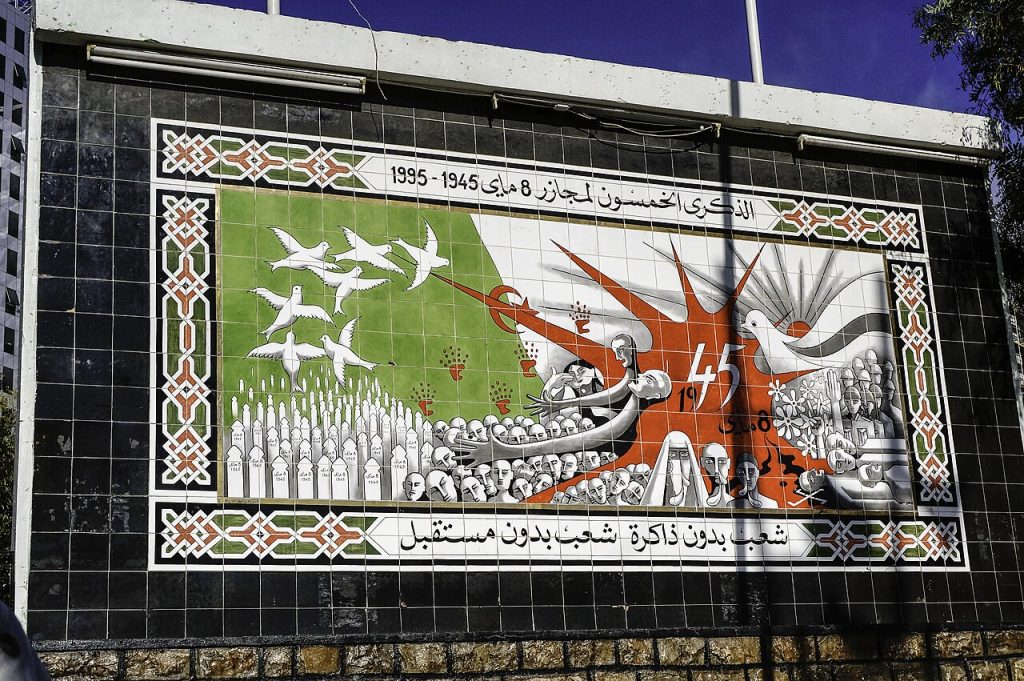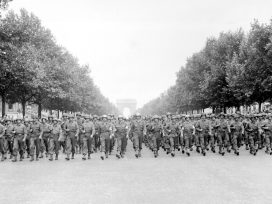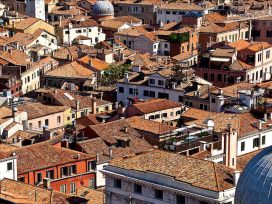It is sometimes said that the Second World War began in the Horn of Africa, in 1935, with Italy’s war of aggression on Ethiopia. It is almost never said that it ended there. And yet, it was the first place in the world where the fighting came to an end.
Hostilities in Eritrea, then an Italian colony, ceased when the country was occupied by troops from the British Empire in the spring of 1941. Italian Somaliland, which covered the eastern seaboard of modern Somalia, was taken at the same time. Ethiopia, which the Italians had themselves occupied since 1936, was fully liberated that November, when the remnants of the Forze armate dell’Africa Orientale Italiana surrendered to British imperial forces – composed mainly of Indians, alongside West, East and South Africans, a large force of Congolese under Belgian command, and even a mixed Arab-Jewish battalion from Palestine – in the city of Gondar.
What the experience of the Horn of Africa tells us is that it took much more than simply ending hostilities to exit the Second World War. Eritrea’s case is instructive. The country remained under British military administration until 1952. The British presented it to the world as The First to Be Freed – the title of a 1944 propaganda pamphlet detailing their occupation regime. In practice, however, the British authorities were profoundly ambiguous about liberating what they continued to recognise as another European state’s African territory. That implied they would return Eritrea to Italian rule at the end of the war, a far cry from what liberation meant (and continues to mean) in Europe.
Scrupulous about following international law, which forbids the alteration of occupied territories’ legal codes – and anxious not to upend the colony’s racial hierarchy – the British in Eritrea kept Fascist Italy’s racial laws in place. These not only protected white supremacy but were also antisemitic, banning Jews from marrying Italians, going to public schools and becoming civil servants. They also continued to employ Fascist Italian colonial administrators. While it took until 1944 for the anti-Jewish statutes to be lifted, another law that prohibited mixed marriages and made mixed-race children illegitimate was not repealed until 1952, the year the British occupation finally ended.

Monument to the Sétif and Guelma massacres in Algeria on 8 May 1945. Image: Dan Sloan / source: Wikimedia Commons
That year, under UN auspices, Eritrea was federated with Ethiopia. The union was supposed to secure Eritreans’ right of self-determination, but their country was soon placed under a state of siege by the autocratic Ethiopian emperor, Haile Selassie (1892–1975), who forcibly incorporated it into the rest of his realm in 1962. Eritrean nationalists had by then already launched an armed struggle for independence under Hamid Idris Awate (1910–1962), a veteran of the Second World War on the Axis side. It ended in their victory in 1991.
Eritrea’s long and conflicted exit from the Second World War reminds us that the dates and events used by Europeans as coordinates with which to navigate the terrain of their violent past map poorly onto the rest of the world. The eightieth anniversary of what, with remarkably little variation across languages and cultures, is known as Victory or Liberation Day, resonates chiefly in the Global North. In countries of the Global South, the date tends to carry rather different connotations.
For example, in Algeria, 8 May 1945 is remembered for the Sétif and Guelma massacres, a series of bloody pogroms carried out by European settlers and French security forces on indigenous Algerians that May and June. In a bitter irony, these atrocities were provoked by an Algerian nationalist march, organised to celebrate the French and Allied victory on 8 May in the town of Sétif. The event catalysed the independence struggle that, in 1954, became the Algerian War.
The idea that 1945 did not mark a moment of victory or liberation, a return to self-rule, or an end to the outrages of a hated occupier, is of course not foreign to central and eastern Europeans. But the connection between the experience of, say, Moldova and that of Somalia – three-quarters of which was, extraordinarily, returned to the former coloniser and leading Axis power, Italy, as part of a UN-mandated plan in 1950 – is all too rarely made. As the example of Sétif illustrates, the view endorsed by the European Union that highlights the moral and political compromises made in allying with the Soviet Union at the same time obscures how the western Allies also dirtied their hands outside Europe.
For the unpleasant truth is that elites in states such as Belgium, Britain and the Netherlands saw little or no contradiction in seeking both to defend empire and to protect democracy, human dignity and the rights of small nations. Australia and the United States were more conflicted. The Australian Labor government opposed the return of the Dutch to Indonesia; President Franklin D. Roosevelt (1882–1945) that of the French to Indochina. But Australia also spilled much blood to restore its rule over Papua New Guinea and Nauru, while in 1944 the US, in arguably history’s last colonial land grab, seized Japan’s possessions in Micronesia, which it ruled as non-self-governing territories until as late as 1994, when Palau gained independence.
Thousands of former Axis soldiers joined in the cause of maintaining Allied foreign rule. The French Foreign Legion, which fulfilled an important military role in the First Indochina War (1946-54), was something of a pan-European force: up to fifty percent of its enlisted men in that conflict were German, many of them Wehrmacht and Waffen-SS veterans; another ten percent were Italian, and there were many Austrians, Romanians, and Poles, too. An even larger role was played by the tens of thousands of surrendered Japanese troops who stayed on for years after 1945 to support British, Dutch and American operations in areas stretching from Indonesia to Korea.
For these men, as for the inhabitants of the lands they patrolled, there was no clear transition from war to postwar, much less to peace, in 1945. This goes a long way to explaining why, in countries such as the two Koreas, Indonesia and Vietnam, 15 August and 2 September – Victory over Japan Day to western, and also Chinese, audiences – are not associated with the end of the Second World War, but are remembered for the achievement of national independence, or at least as major stepping stones towards it. The point applies equally to many other countries, from Burma to Egypt, India and Pakistan, Syria and, perhaps most pertinently in our current moment, to Israel and Palestine.
Despite historical anniversaries’ fixation on commemorating specific dates, the conclusion of the Second World War was never a single moment defined by victory and defeat. Rather, it was a drawn-out and pluriform process that took much time and great effort: not an end so much as an ending. In fact, the word should be plural. There were many exits from the Second World War and some have never been reached. Many of the bombs used to wage the war were dumped after hostilities ceased, and continue to claim casualties every year, from Poland’s Baltic coast to the Papuan city of Lae.
The Second World War’s environmental history is thus very much contemporary. This is not necessarily the case for all its global pasts, some of which have reached their terminus. Indonesia’s, Algeria’s and even Eritrea’s independence struggles have long since been completed; even their own ‘postwars’ are, for most of their young populations, over. They belong to different generations and a different time, the twentieth century.
In another sense, though, the war’s global history is the history of the present. It is no coincidence that its writing has gathered pace in the first decades of the twenty-first century, as western societies have become more culturally and ethnically diverse, and more self-conscious about their imperial pasts. The ‘global turn’, as it is known among historians, followed the ‘memory boom’ that gave voice to groups that did not fit so neatly into the national narrative, such as Jews, women, the queer community and people of colour.
It has also coincided with the rise of China and, to a lesser extent, the other BRICS states, which goes some way to explaining why textbooks now routinely date the Second World War’s beginning to 1937 and the Marco Polo Bridge Incident between Chinese and Japanese troops outside Beijing. Pleading the South African case against Israel for its genocidal violence in Gaza before the International Court, Vusimuzi Madonsela commented that we are witness to an ‘ongoing Nakba’. Clearly, the conviction that the history of the Second World War reveals something fundamental about present-day realities is still alive, albeit not in the halls of power of the small continent of Europe.







